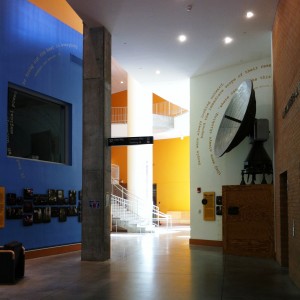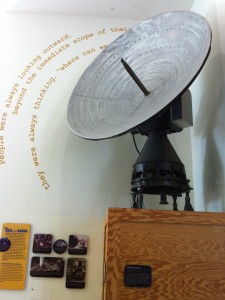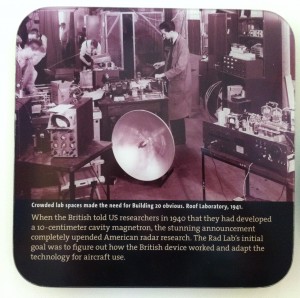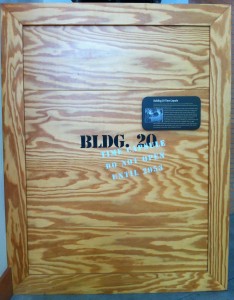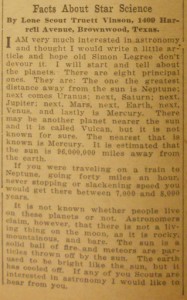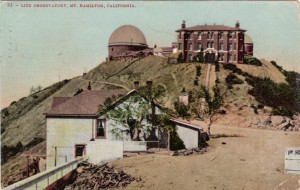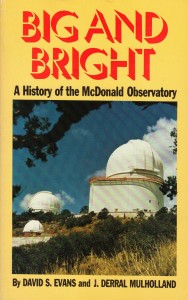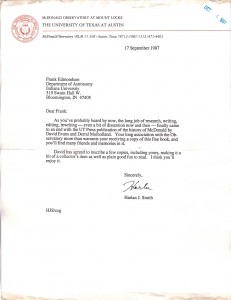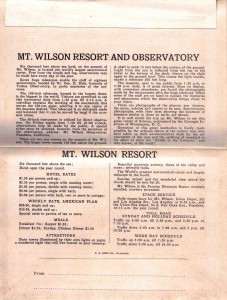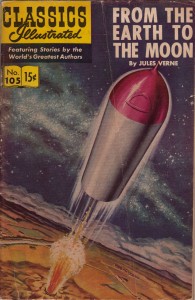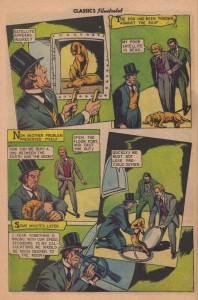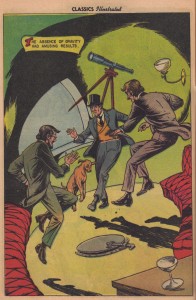Because we can never have too many Hot Wheels.
At the Track: Mars Curiosity
1 08 2012Comments : Comments Off on At the Track: Mars Curiosity
Categories : Ephemera, Mars Science Laboratory, News
Rad Lab & Building 20
16 05 2012In addition to trying to wrap up the typical end-of-the-semester tasks last week, I also made a quick trip to MIT (Cambridge, MA). I had a few hours to myself on either side of my meetings and I put those hours to good use by walking as much of campus as possible. Needless to say, MIT sits at the intersection of my primary research foci, architecture and science. Perhaps also needless to say, my first stop was the Stata Center, the most controversial building on campus (still, even though it opened in 2004).
Early dissent over the Stata Center had little to do with the design itself and a lot to do with emotional and intellectual attachment to the building it was slated to replace, Building 20. For the purposes of this site, the most notable thing about Building 20 was the fact that it once housed the Radiation Laboratory funded by the National Defense Research Committee (NDRC). Although MIT’s involvement with military research was always seen as problematic by some (and those sentiments would increase during the Vietnam era), during World War II, Rad Lab became the control center for a global research network centered on applied microwave physics.[1] Most of the radar and microwave communication technologies developed during the war came out of the Rad Lab; the British military developed the rest.
The photos above show the homage to Rad Lab in one of the hallways of the Stata Center. The radar antenna stands on top of a wooden crate that holds a Building 20 time capsule. Kudos to the person who chose this particular antenna as representative of MIT’s research. As the accompanying signage explains, the SCR-615 radar system was “not one of the best” (possibly explaining why there was a spare dish sitting around the MIT Museum). You know you’ve got confidence when your celebratory display highlights not just your research successes, but your research disappointments.

Julian Schwinger has great style, makes war look like an intellectual exercise. Building 20 Exhibit, Stata Center, MIT
With the end of WWII came the end of Rad Lab, but not Building 20. Research in microwave physics was absorbed into the Research Laboratory of Electronics (RLE), housed in the A wing of the building. The Laboratory for Nuclear Science (LNS) took up another good chunk of the space. The military maintained a presence in Building 20 in the form of ROTC headquarters as well as a few U.S. Navy offices. More famously, the building also became home to MIT’s linguistics department. One wonders how different Noam Chomsky’s ideas about the military and U.S. foreign policy would have been had the department been housed in Kresge Auditorium (probably not THAT much different, but still).
Building 20 is no more, of course. In its place stands the Stata Center, a 3-dimensional wonderland of space designed by Gehry Partners LLP.[2] The controversy comes from the multitude of problems reported by users of the building. MIT eventually sued (and then settled with) Gehry.
I have much to say about the Stata Center, so feel free to contact me if you’re interested in my analysis. My photos of the building are available on flickr, as are my photos of other parts of the MIT campus.
If you’d like to read a warm and fuzzy article about Building 20 and its role in MIT’s campus culture, see “A Last, Loving Look at an MIT Landmark—Building 20,” RLE undercurrents Vol. 9, No. 2 (Fall 1997). [download .pdf].
————–
[1] If you’re interested in campus tensions during the Vietnam War (MIT was the largest defense contractor in the U.S. at the time), read Stuart Leslie, “‘Time of Troubles’ for the Special Laboratories,” in Becoming MIT: Moments of Decision, ed. David Kaiser (Cambridge: MIT Press, 2010), 123-43.
[2] More confidence: Frank Gehry’s firm doesn’t even have a real website. Gehry Partners LLP has zero information about the firm and its projects. Gehry and partners don’t really need to invest time and money in their own advertising—trade and academic publications do all their publicity for them.
Comments : Comments Off on Rad Lab & Building 20
Categories : Ephemera, Instruments
Yuri Gagarin
12 04 2012In addition to a 6′ x 6′ Russian star chart, I bought this poster of Yuri Gagarin during my first trip to the Soviet Union in 1988.[1] It was the tail end of the Cold War, but glasnost’ hadn’t quite taken hold; nobody was quite sure it was safe to talk to the Americans, and for our part, we never used names when talking about Russian acquaintances because of the listening devices embedded in the walls. Although at least one woman from our group ended up marrying a fellow she met in Leningrad, I wasn’t so lucky.[2] Few people were overtly hostile, but I had more than one stranger on the streetcar ask me to explain why Americans hated Russians so much. Why did we want to kill them? I was shocked at the time, but in retrospect, why wouldn’t they think that? Back home, Reagan was doing a good job of threatening to annihilate them.
Our cultural excursions were mostly benign (our leaders dragged us to see the attic garret where Raskolnikov would have lived if he’d been a real person). If the outings were meant to demonstrate the advanced development of the Soviet state, they backfired (really? It’s 1988 and you’re still spitting water and blood into a bucket at the dentist’s office?). There was no clear message that the USSR was winning the Cold War. At the same time, daily life was enveloped in both pro-Soviet and anti-American rhetoric, from the monumental Communist slogans on the top of buildings to the posters in the doctor’s office blaming the spread of AIDS on foreigners. While Kristine and Sergei may have ended up a happy couple, the rest of us weren’t going to be friends. Ever.
And so I spent a lot of time wandering around the streets of Leningrad—Riga—Odessa—Tblisi—Moscow—by myself, looking awkward and suspicious, I’m sure. I bought my star charts and my Gagarin posters and my Soviet Workers Unite! poster (an ironic purchase, to be sure) and my space pins [значки] and my lacquer boxes in all but complete silence. I spoke enough to buy my bread rolls [бублик] and pies [пирожки] on the street, but never so much that you could call it a conversation. When I was in Moscow, I spent all day at the VDNKh space pavilion, hanging around the Lunokhod, but made contact with no one. And it wasn’t just my natural reticence. When I returned two years later, people were still reluctant to speak to foreigners because although it appeared glasnost’ was going to be a long-term government policy, no one could be sure. What if someone spoke frankly to an outsider or to the press? Dramatic policy shift wasn’t exactly an uncommon practice in the Soviet Union.
There’s a point to all this and here it is: if you had told me in 1988 or even 1990 that one day the U.S. would be looking to Russia for transportation to an international space station, or that our governments were actually considering collaborating on space science projects, I would have laughed you out of the room. The U.S. was too overtly hostile to the USSR; the USSR had no working technology outside of the military. Working together? Not possible. I knew what I was talking about—most of my predictions about the Russian future were right on the money. Yet here we are in 2012, on the 51st anniversary of Gagarin’s launch into orbit, and I’m not laughing anymore. It’s not the best of relationships between the two nations, it’s not without problems. But I’m about to post links to a photo history of the Soviet space program, a recording of the radio communications during Gagarin’s launch, and a Soviet documentary about Gagarin (1969), and I can still go to bed without worrying about the NSA showing up on my front porch in the morning. In 1988, I would have stopped to wonder how thick my CIA and KGB files were getting to be. Today, of course, hitting the “publish” button on this post won’t even disturb my sleep.
—————
[1] The words beneath the image were not actually Gagarin’s; rather, they have been attributed to A. Lozenko. It reads, “While I was flying round the Earth in a space-ship [korabl-sputnik], I saw how beautiful our planet is. People, let us preserve and increase this beauty, not destroy it! Gagarin.”
[2] The one woman who hit on me seemed more interested in using me to defect than anything else. At the time, I suspected she was with the KGB because 1) she was persistent in her interest to go to America; and 2) who else would have the guts to walk up to an American woman and express that kind of interest under Soviet rule? In retrospect, I think she was a private citizen who was relieved to see someone else, from somewhere else, who looked like her (i.e. like a 12-year-old boy).
Comments : Comments Off on Yuri Gagarin
Categories : Ephemera, News
Facts About Star Science
5 03 2012I’m teaching a graduate seminar on “Science & Architecture” this semester. Last week, we focused on the origin and development of the field of architectural acoustics, with much of our energy directed toward the shift in construction and sound engineering after the introduction of Hollywood “talkies.” Near the end of class, we brainstormed a list of scientific discoveries that might have been as disorienting as the move from silence to recorded sound in movies. Telephones, electricity…all the usual suspects. A few weeks ago, we’d discussed the possible cultural repercussions of the work at CERN, so that subject came up once more. Perhaps because I’d just wrapped up online discussion on the subject, my own contribution to the list was the discovery of Kuiper belt objects and the subsequent reconfiguration of our solar system to include only eight, rather than nine, planets. Who knew my facebook friends could be so emotionally invested in a nine planet solar system?
Earlier this evening, when I stumbled upon Truett Vinson‘s 1919 contribution to the Lone Scout magazine on REH: The Two-Gun Raconteur, I wished I could revise last week’s answer. I suspect the discovery of Pluto was ultimately more disorienting than the demotion of Pluto. It’s rough having your certitude shattered by science. At least Truett Vinson was mentally prepared for the possibility of a ninth planet, even if he was looking for it in the wrong place. That he was thinking about Vulcan at all is pretty amazing—most astronomers had given up on Vulcan by the end of the 19th century. By 1915, when Einstein’s theory of relativity explained the discrepancies in Mercury’s perihelion precession, (almost) everyone else had decided they were on a wild goose chase, too.[1] So, I’d really like to take a look at Vinson’s high school textbook—when was it published? How did it describe the hypothetical Vulcan? And what did Vinson think when Lowell Observatory announced the discovery a ninth planet some 4.4–7.4 billion km distant from the Sun?
———————-
[1] Actually, the hunt for Vulcan continues today, but its been recast as a search for intra-Mercururial objects, or vulcanoid asteroids.
Comments : Comments Off on Facts About Star Science
Categories : Ephemera
Space Settlement
12 01 2012
Interior View of of Cylindrical Space Colony, 1975 (NASA AC75-1086). Image courtesy NASA Ames Research Center
Last night, I stumbled upon a collection of artwork documenting a series of space colony studies conducted at NASA Ames in 1975. If you want a snapshot of the U.S. space program during that time, take a look at the text from the NASA Ames/Stanford Summer Study. (If you’re one of my architecture students and you don’t feel like reading the entire book, just take a look at the design goals section.) Apparently, the 21st century is when we’re supposed to fulfill Hermann Oberth’s dream, “To make available for life every place where life is possible. To make inhabitable all worlds as yet uninhabitable, and all life purposeful.”
Well, we know where I stand on that issue (is there a reason humans have to claim every bit of the universe as their very own natural resource?), but still, I love some of the artwork that came out of those early brainstorming sessions.

Cutaway view of Toroidal Space Colony, 1975 (NASA75-1086-1). Image courtesy NASA Ames Research Center
You’ve got to love the mid-century modern multi-family dwellings with terra cotta patios. A more complete collection of renderings of 1975, 1976, and 1978 proposals can be found on the Space Settlement site.
Comments : Comments Off on Space Settlement
Categories : Ephemera, NASA
Lick Observatory
8 11 2011Click on the images for high-resolution scans. For earlier posts detailing Lick Observatory, see here.
Comments : Comments Off on Lick Observatory
Categories : Ephemera, Observatories
McDonald Observatory
5 10 2011So, to pick up from where I left off in the story of Frank K. Edmondson’s career, I’d like to share a few thoughts on McDonald Observatory.
My last post reported the intellectual and labor connections between Lowell Observatory and the Department of Astronomy at Indiana University (established via W. A. Cogshall). Edmondson did the work for his Master’s thesis on the motions of the globular clusters and galactic rotation at Lowell. After finishing his thesis, he stayed on for another year at the observatory, taking plates for Clyde Tombaugh, before matriculating at Harvard University. He went to Harvard with the understanding that if he finished his Ph.D., there would be a place waiting for him at Indiana University, and that’s just how it worked out. He apparently had to choose between the new position at Indiana and a more established position at UVa. Howard Shapley counseled him to take the place that had been created for him at IU, because he felt it was more important to expand the number of astronomy posts across the academy than to settle into an established spot at UVa.
At the time, it must have seemed like a strange decision. Edmondson had been working on stellar kinematics (study of the movement of stars), so it would’ve made more sense for him to go work with Alexander Vyssotksy, who was focusing on galactic kinematics and proper motion, at Virginia. But, as we know, Edmondson had many successes at Indiana, including his role in founding a cooperative project between IU, Texas (McDonald Observatory) and Chicago. Actually, Edmondson credited Otto Struve for the start of the project, noting that Struve had published a paper calling for more cooperation in the profession.
From Edmondson’s oral history:
[Edmondson]: “If my memory’s right, Struve’s paper is to be found in the SCIENTIFIC MONTHLY. In the neighborhood of somewhere around 1938, ’39, somewhere along in there. Struve had an article called “Cooperation in Astronomy.” And his basic thesis was — “Look,” he said, “we’re training young astronomers, and then they’re going to schools where they have no telescopes at all, and something has to be done to provide them with the means to continue their scientific careers.”
“So his proposal at that time was to get some university interested in this sort of thing, and go to a foundation to get money for a second telescope at the McDonald Observatory.
“So I wrote to Struve, and asked him for two or three reprints of his article. I said, “I would like to have our President and some of the deans here read what you have written.
“So Struve sent me the reprints, and he said, “I’m also interested in getting going as fast as we can, so here’s my proposal.”
“He said that Vyssotsky had been in communication with him about doing this K star work at McDonald, and Virginia had not been able to raise the funds to pay for the telescope time that would be used for this.”
[Interviewer]: “Is this how you got into the K star work?”
[Edmondson]: “And so he said he was sure Vyssotsky would be willing to cooperate with me. So I got in touch with Vyssotsky. He said, “Oh, yes.” He said, “If you can get the telescope time, I’ll send you charts and everything.”
“So I got back to Struve. Then I got busy here — and the money was provided from here.”
[Interviewer]: “Did you start on the 82-inch at McDonald?”
[Edmondson]: “So we started paying, what was it, $600 a year for 15 nights — it’s a lot more expensive than that now!”
As the interviewer points out, this collaborative effort was “the kernel of what we may now call the National Observatory.”
At the time of the interview (1977), Indiana University was still purchasing time at McDonald. These days, IU works jointly with Wisconsin and Yale at the WIYN 3.5m Observatory on Kitt Peak, but I notice that an astronomer from Texas Christian University is using the 2.1m Otto Struve Telescope at McDonald to study open clusters from the WIYN Open Cluster Study. Astronomy—still a team sport.
So, this is a very long introduction to the book I’ve been reading this week, Big and Bright: A History of the McDonald Observatory by David S. Evans and J. Derral Mulholland (1986). It’s interesting enough on its own, as a history book, but this copy is made even more so by the inscription inside the front cover and a letter that was left tucked inside:
The inscription reads: “For Frank Edmondson with many thanks for your help and hoping we got it right—David S. Evans—8th September 1987”
You can click on the image to see a full-size image of the letter. It reads as follows: “Dear Frank: As you’ve probably heard by now, the long job of researching, writing, editing, rewriting—even a bit of dissention [sic] now and then—finally came to an end with the UT Press publication of the history of McDonald by David Evans and Derral Mulholland. Your long association with the Observatory more than warrants your receiving a copy of this fine book, and you’ll find many friends and memories in it. David has agreed to inscribe a few copies, including yours, making it a bit of collector’s item as well as plain good fun to read. I think you’ll enjoy it. Sincerely, Harlan J. Smith.”
I hope Prof. Edmondson enjoyed the read. I know I will.
Comments : Comments Off on McDonald Observatory
Categories : Ephemera, Observatories, Telescopes
Mount Wilson II
25 09 2011And speaking of Mount Wilson Observatory, it was featured in a souvenir postcard booklet I picked up in the same antique shop in which I found my Jules Vernes classic comic. Founded in 1904 by George Ellery Hale, the observatory now consists of multiple instruments, both historic (Hale’s 60-inch Telescope, for instance) and “cutting edge” (the Berkeley Interferometer and Georgia State University’s CHARA Array). The observatory is located ideally for tourism: 30 miles from Los Angeles, on the summit of Mount Wilson above Pasadena in the San Gabriel Mountains, just an hour drive from the city. Today, the observatory’s public program is focused on a guided tour that includes a visit to the observing floor of the Hooker 100-inch Telescope.
There is also a museum and a cafe on site so you can make a leisurely day of your visit. If you are feeling a need to spend a lot of money, you can organize a group of your friends (up to 25) and spend a night observing with the 60-inch telescope. As of 2011, the fee was $900 for a half-night of viewing, but you should check the fee schedule for the current rates (also, check out the glossy brochure).
The postcard booklet demonstrates the longevity of the tourist industry on the mountain. At the time of the booklet’s publication, the observatory was reached via the Mount Wilson Toll Road (now a hiking trail). While fully one-half of the descriptive text in the booklet described the wonders of the observatory, Mt. Wilson Hotel (first built 1904, no longer extant) was clearly the planned money-maker in this organization. Road tolls, meals and accommodation went to support the Mt. Wilson Toll Road Company—later the Mt. Wilson Hotel Company. Unfortunately, according to Marv Collins’ article at OldRadio.com, neither the toll road nor the resort were good financial investments, eventually going belly up despite public interest in the observatory.
As far as visual astronomy is concerned, it seems to me that the hotel and the observatory must have been at odds from the very beginning of their relationship. The first attraction listed for the resort? “Sixty towns illuminated by their own lights at night, a wonderful sight that will live forever in your memory.” Did the astronomers working at the observatory sense they were witnessing what would eventually become the almost global problem of light pollution? Or were they just happy to be able to buy a good meal for Sunday dinner at the hotel?
Comments : Comments Off on Mount Wilson II
Categories : Ephemera, Instruments, Observatories
From the Earth to the Moon
21 09 2011I spotted this piece of awesomeness in a local antique store while looking for ways to blow my paycheck. Classics Illustrated was a 169-volume series presenting the work of “the World’s Greatest Authors” in comic book form. The first issue came out in 1941 under the banner of “Classic Comics,” with a name change in 1947 to “Classics Illustrated.” Here we have issue No. 105, featuring Jules Verne’s From the Earth to the Moon (De la Terre à la Lune) in 1865. Actually, it combines together the story line of From the Earth to the Moon and its sequel, Around the Moon (Autour de la Lune), published in 1870.
The Classics Illustrated version was first published in 1953, but according to the inside cover, this is a 1965 reprint (apparently the company stopped printing original editions in 1962). I’m glad it’s a reprint—can you imagine the cognitive dissonance inherent in illustrating a nineteenth-century conception of lunar travel from a post-Project Mercury standpoint? In fact, right around the time this comic hit the newstands, Project Gemini was seeing its first crew launch (Gemini 3, on March 23, 1965). You’d have to pity anyone who had to take Jules Verne’s conception of a lunar vehicle seriously enough to draw it in 1965:
I’m pretty sure gasoliers are not suitable for space travel.
Verne may have been quite forward-thinking in some areas, but what really stands out in this comic is its rendering of post-Civil War society in the United States. I mean, it’s the local gun club that sends the rocket to the moon, not a national aeronautics commission. Had to do something with all the left over munitions, I suppose. I do wonder if the original French version characterized Ardan (the daring fellow who designed the rocket shown above) as “an idiot,” or if that’s an American embellishment.
Another thing: I’d forgotten how creepy Victorian literature could be. Case in point—what do you do when your much beloved dog dies from an asteroid impact? You dump him out the airlock, hopefully without losing all your “precious oxygen”:
Just be glad I didn’t include the frame showing the dog’s corpse floating past the portal.
Jules Verne could also be funny, although it doesn’t particularly come across in this version, unless you think the entire concept of the Baltimore Gun Club sending humans to the moon, with no hope of return, is funny. At least they thought to pack shrubs for planting on the moon’s surface in the cargo hold. But it must be a funny comic, because my partner laughed (more than once) at this page:
You can read From the Earth to the Moon and Around the Moon in English online at Project Gutenberg.
Comments : Comments Off on From the Earth to the Moon
Categories : Ephemera
Rocket Pioneers
17 09 2011The National Air and Space Museum has a great online exhibit on international rocket pioneers and the early science fiction films that inspired them. Imaginary rocket ships in silent movies! What could be better?
Follow the museum on twitter @airandspace.
Comments : 1 Comment »
Categories : Ephemera, News
